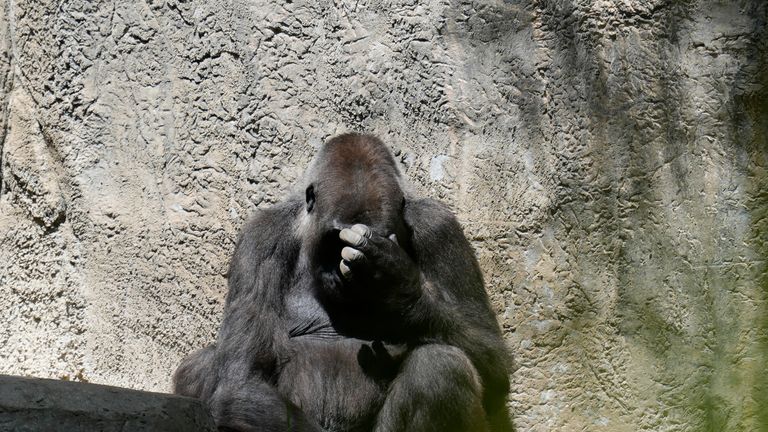During the recent total solar eclipse, cranes appeared to dance, and meerkats ran around erratically, zookeepers have reported.
Scientists and wildlife experts observed the unusual behaviors exhibited by animals at various zoos across the United States during the rare event, which was visible across North America on April 8.
The San Antonio Zoo filmed the event and posted the video on X, formerly Twitter, showing how animals reacted as the moon passed between the sun and Earth.
"Meerkats, during totality, erratically running throughout their habitat as one large group," the post said.
Meanwhile, whooping cranes—an endangered species—appeared to dance shortly after the eclipse, and flamingos congregated, the zoo added.
The zoo also said that a few minutes before the total eclipse, the meerkats approached and entered the indoor section of their habitat.
According to the zoo, their behavior supports its hypothesis that diurnal animals—meaning those that are awake during the day—tend to display their typical evening activity patterns during an eclipse.
"While it's possible some of this behavior may have been coincidental, this certainly caused a difference in a typical day for all of us—humans and animals," the zoo wrote in the post.
The Dallas Zoo said that some birds became louder before totality, then fell completely silent, while flamingos and penguins moved closer together, CBS reported.
Zookeepers described how other animals became wary but were intrigued by the eclipse.
The Fort Worth Zoo in Texas said in a series of posts on X: "Overall, there was an increase in vigilance and curiosity as well as movement toward the gates to go to the animals' indoor barns for the evening.
"The animals that moved toward their gates included the tortoises, elephants, giraffes, kudus, bonobos, gorillas and coatis. The animals that displayed an increase in curiosity and vigilance included the lions, lemurs, mandrills, wild dogs and gorillas."
The zoo also said that some of the nocturnal animals, such as its ringtail cats and two owls, showed an increase in activity.
It added that there were "no observed signs of anxiousness or stress" among the animals, and that things returned to normal after the eclipse.
The last time researchers were able to study animals during a solar eclipse was in 2017. In a study published in 2020 in the journal Animals, scientists described the behavior of 17 species of mammals, birds and reptiles at the Riverbanks Zoo in South Carolina during that event.
More than three-quarters of the animals that were observed had a clear reaction to the eclipse. The researchers described their 2017 findings on SciStarter's website, which offers resources for "citizen science."
"For example, giraffes galloped in a group, Siamang gibbons made interesting calls, Galapagos tortoises moved towards each other very quickly (for tortoises!) and gazed towards the sky, and many animals gathered together in groups (maybe for protection?) or started their evening routines—some animals went to where they usually sleep and a nocturnal bird woke up as if it was already night time."
The site is being used to collect observational data from the public to study how animals reacted to this year's eclipse.
Do you have a tip on a science story that Newsweek should be covering? Do you have a question about animal behavior? Let us know via science@newsweek.com.
Disclaimer: The copyright of this article belongs to the original author. Reposting this article is solely for the purpose of information dissemination and does not constitute any investment advice. If there is any infringement, please contact us immediately. We will make corrections or deletions as necessary. Thank you.



